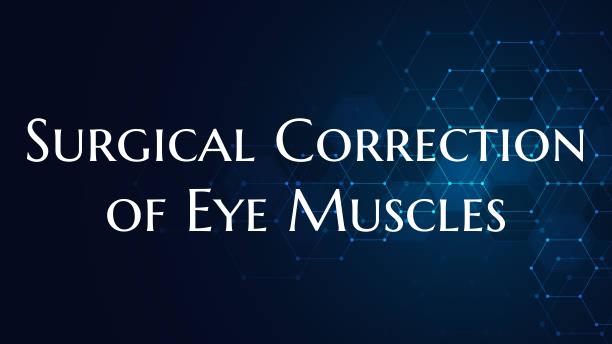
Surgical Correction of Eye Muscles
Introduction: Surgical correction of eye muscles, also known as strabismus surgery, is a procedure designed to align the eyes properly. Strabismus, commonly referred to as crossed eyes or squint, is a condition where the eyes are misaligned and do not work together. This can result in double vision, blurred vision, or even loss of depth perception. Surgical correction of eye muscles is often recommended to improve eye alignment and restore binocular vision.
Understanding Strabismus: Strabismus can be caused by various factors, including problems with the eye muscles, nerves, or brain. It can occur in children and adults and may manifest as an inward or outward deviation of the eyes. In some cases, strabismus can be corrected through non-surgical interventions such as eyeglasses, vision therapy, or Botox injections. However, when these methods are not effective, surgical correction of eye muscles may be necessary.
The Surgical Procedure: During surgical correction of eye muscles, the ophthalmologist will carefully adjust the tension and position of the eye muscles to achieve proper alignment. The procedure is typically performed under general anesthesia on an outpatient basis. Small incisions are made in the conjunctiva, and the surgeon accesses the eye muscles to make the necessary adjustments. Depending on the specific type and degree of strabismus, different surgical techniques may be used to realign the eyes.
Recovery and Results: Following surgery, patients may experience temporary discomfort, redness, and swelling in the eyes. Eye drops and pain medications are usually prescribed to manage any post-operative symptoms. It is vital for patients to follow their ophthalmologist's instructions regarding post-operative care and attend follow-up appointments to monitor progress. Over time, as the eyes heal and the muscles adjust, improvements in eye alignment and vision should become evident.
Conclusion: Surgical correction of eye muscles is a valuable treatment option for individuals with strabismus seeking to improve eye alignment and visual function. By addressing the underlying muscle imbalance, this procedure can help enhance binocular vision and quality of life for patients of all ages. If you or a loved one are experiencing misalignment of the eyes, consult with an eye care specialist to determine the most suitable treatment approach, which may include surgical correction of eye muscles.